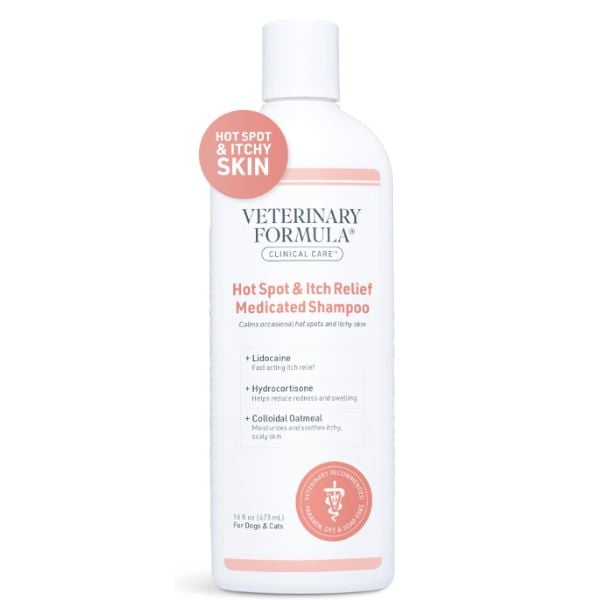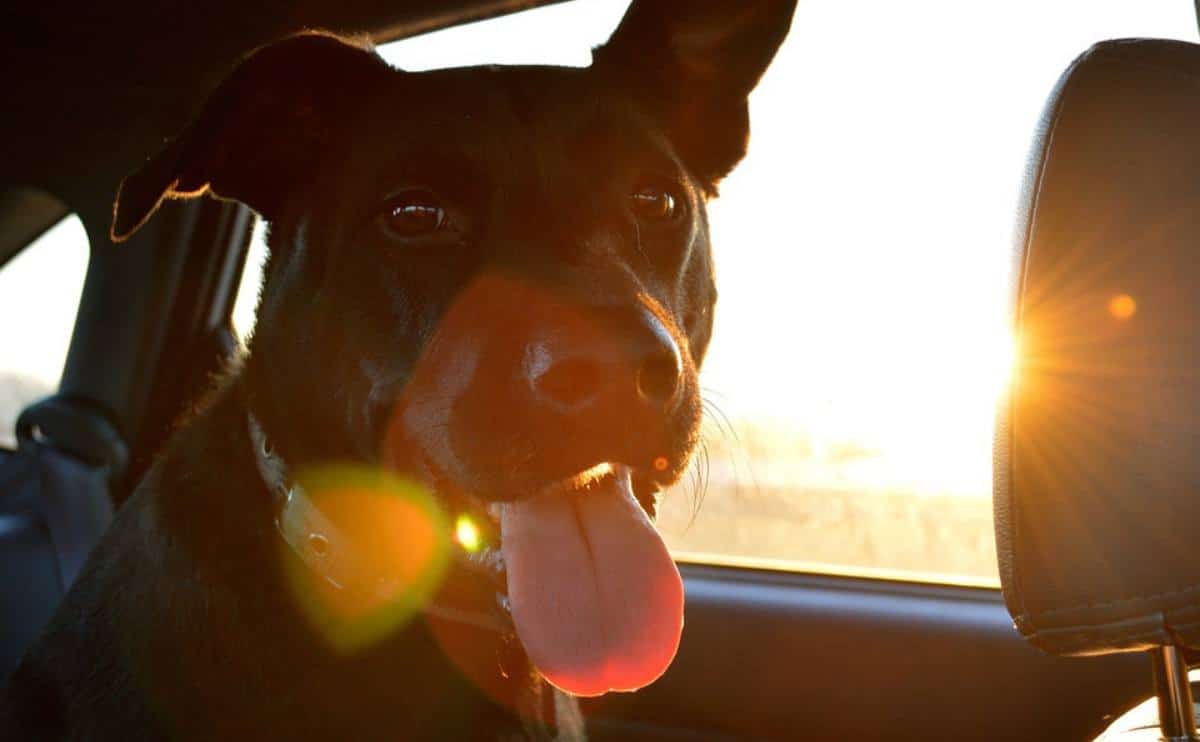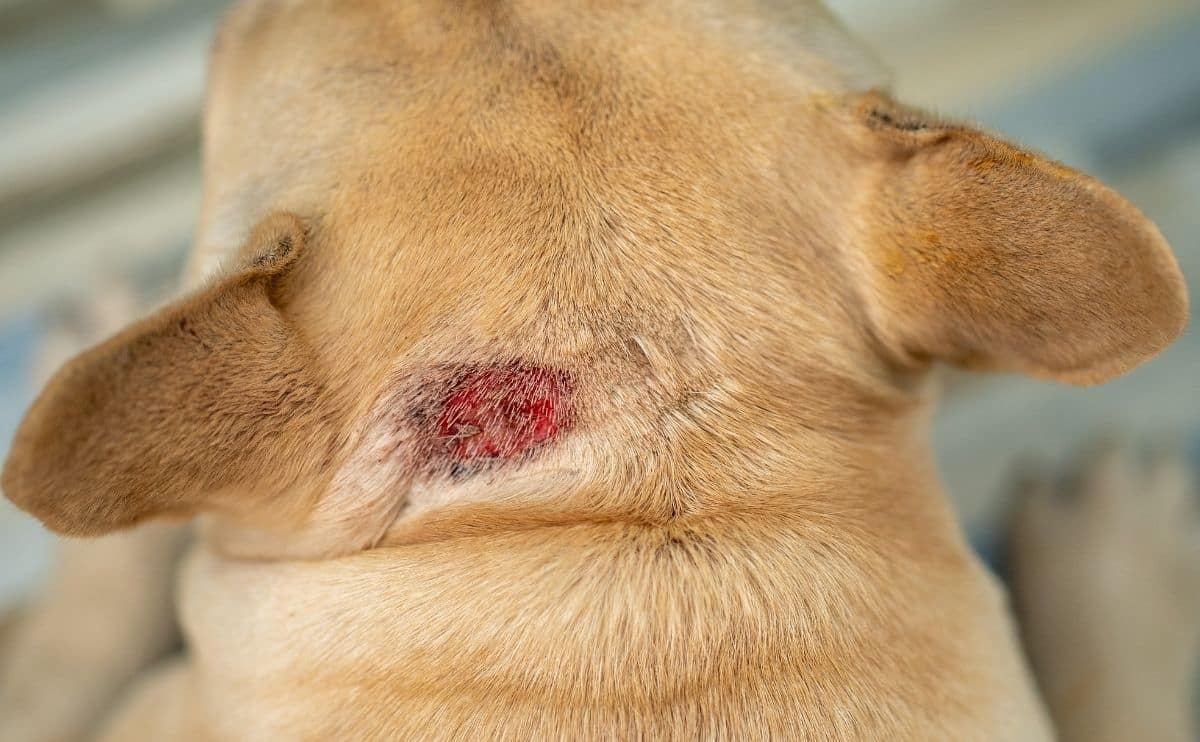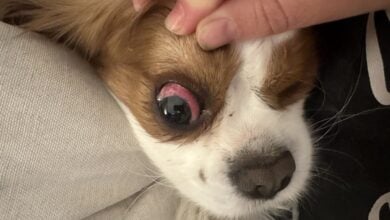How To Treat Hot Spots On Dogs At Home, Fast
When you purchase through links on our site, we may earn a commission. Here’s how it works.
That nasty red patch on your dog’s skin? It’s a hot spot. And if it’s oozing or your pup won’t stop licking it, you’ve got hours to act before it gets worse. But it’s not all bad news when answering the question, “How to treat hot spots on dogs at home?”
Table of Contents
The good news? Here’s exactly how to treat hot spots on dogs at home using things you probably already have. Here’s exactly how to stop the itch, calm the skin, and keep your dog from turning them into a bigger mess.
| Best Overall | Bacterial Infection | Ointment | Shampoo |
|---|---|---|---|
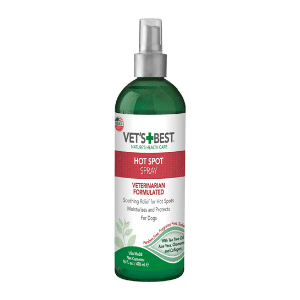 | 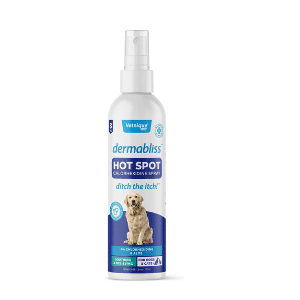 | 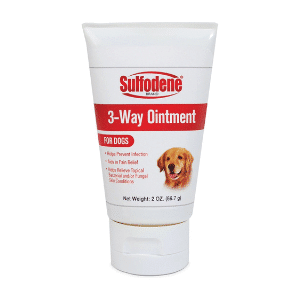 | 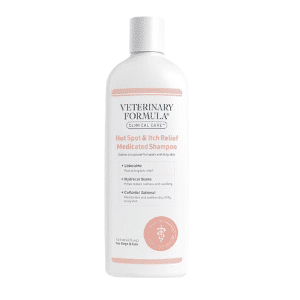 |
| Vet’s Best | Vetnique Labs Dermabliss | Sulfodene | Veterinary Formula Clinical Care |
| View on Chewy | View on Chewy | View on Chewy | View on Chewy |
| Read Review | Read Review | Read Review | Read Review |
What Are Hot Spots On A Dog?
This guide is all about how to treat dog hot spots at home, covering what to use, how to clean them, and how to stop your dog from making it worse. Do you want to know what hot spots are, what causes them, and how to spot the difference between a hot spot and other skin issues like ringworm or mange? Check out our deep dive on what are hot spots on dogs? We also cover tips on preventing hot spots from ever coming back – a crucial read when tackling dog hot spot treatment at home.
What Do Dog Hot Spots Look Like?
Hot spots, aka acute moist dermatitis, are one of the most common (and annoying) skin issues in dogs. They’re usually red, wet, and painful patches that can show up almost anywhere, but especially on the face, neck, hips, or legs.
They’re easy to miss on long-haired and fluffy breeds, but once you spot one, it’s obvious:
- Red, inflamed skin, sometimes raised or raw
- Oozing or moist texture (gross, I know)
- Your dog won’t stop licking or biting it

Unlike dry, flaky conditions like ringworm, hot spots are wet, irritated, and inflamed, and they can go from tiny to terrible in under a day, sometimes a few hours, if ignored.
Heads-up: They hurt. Dogs may flinch, scratch, or even yelp when touched. You might need an extra set of human hands to help.
How To Treat Hot Spots On Dogs At Home: 6 Steps
If your dog’s been diagnosed with a hot spot, or you’ve seen this before and your vet’s cleared you to treat it at home, these are the six steps you’ll want to follow.
This step-by-step guide shows you how to treat hot spots on dogs at home quickly and safely. This treatment is fast, effective, and focused on stopping the itch, calming the skin, and preventing infection.
1. Give Pain Relief (If Your Vet Recommends It)
If your pup flinches or panics when you touch the area, give vet-approved pain relief about 30 minutes before treatment. This helps them relax and tolerate clipping and cleaning. Your vet may suggest aspirin, but never give ibuprofen or naproxen, which are toxic to dogs.
We have a guide on the best pain meds and the best natural pain relief for dogs, including herbal options and more home remedies.
2. Clip The Hair Around The Hot Spot
Use pet-safe clippers (or safety pet scissors if your pup won’t let the noisy clipper near them) to carefully remove hair from around the spot. This helps air out the wound and gives you full access to cleaning and treatment.
I advise using a dog hair clipper rather than scissors because you never know how painful their hot spot is or how they might react. However, if your pup won’t let you use clippers, it’s crucial to use safety pet scissors or round-tip scissors instead. You don’t want sharp scissors in your hand or near their skin if they jump in pain.
We have a guide on the best hair clippers for dogs and tips on using them.
3. Clean The Area Gently But Thoroughly
Use an antiseptic solution like chlorhexidine spray or wipes to disinfect the spot. Don’t scrub, just dab gently and let it air dry. Cleaning is a must for any effective dog hot spot treatment at home.
4. Apply Antibiotics (Only If Prescribed)
If your vet has prescribed a topical or oral antibiotic, apply it exactly as directed. Don’t use leftover meds, as different infections need different treatments.
We have a guide on antibiotics for dogs and more information on specific options and dangers to be aware of.
5. Use An Anti-Itch Medication
Your vet might prescribe a steroid spray or cream to control the itch and help your dog heal faster. Many OTC sprays also contain soothing ingredients like hydrocortisone or aloe.
We also have a guide on the best home remedies for itchy dog skin, including many natural and over-the-counter options to help soothe itchiness.
6. Stop The Licking With An E-Collar
This is non-negotiable: your dog needs to stop licking, or it’ll just get worse. Use a cone (E-collar) or an alternative. Yes, the cone of shame is annoying, but it works.
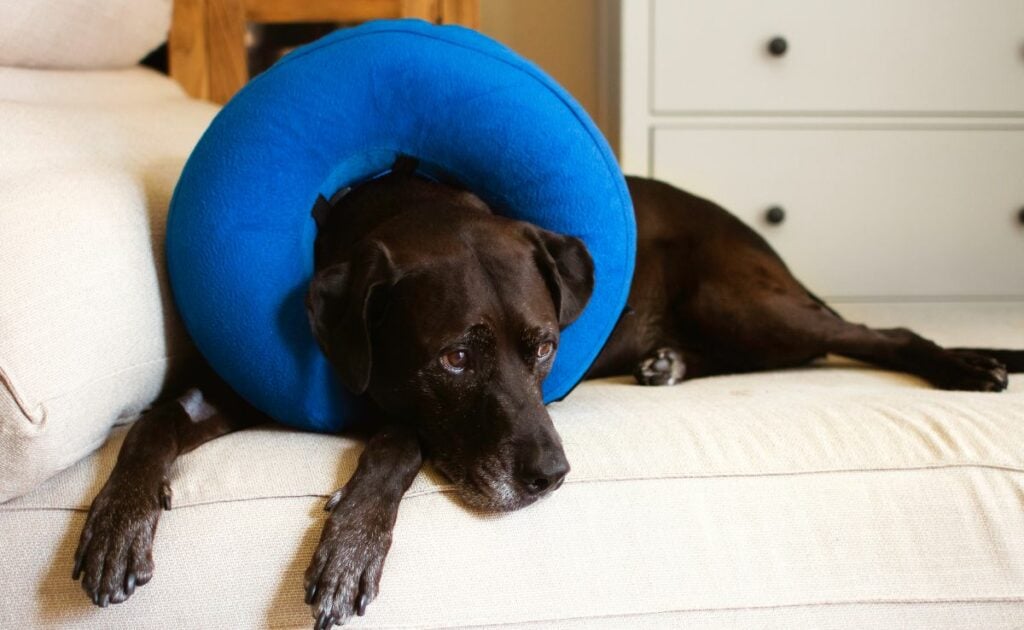
I recommend all dog owners have one at home because you never know when you might need one.
I find that plastic e-collars don’t last very long, and my dogs find them uncomfortable. We have a guide on e-collar alternatives that offer more durable and comfortable options.
Prefer To Watch It Being Done?
Want to see how to treat hot spots on dogs at home step by step? Dr. Andrew Jones, a licensed veterinarian with years of hands-on experience, walks you through the whole process in this short, easy-to-follow video. It’s all here, from clipping the fur to cleaning and soothing the sore.
Bottom Line: This dog hot spot treatment at home works best when you act within 24 hours. Left untreated, it can double in size overnight.
4 Over-The-Counter Remedies For Hot Spots
Not all over-the-counter treatments are created equal. Some sprays soothe instantly, while others barely help at all. Here are the best cures for hotspots on dogs that you can buy without a prescription.
Each one is vet-approved, easy to apply, and backed by strong reviews. I have also chosen the following remedies based on their performance, ingredients, price, our team’s experience, and more.
Important: Clean the hot spot thoroughly before using any of these treatments to ensure they absorb properly.
Best Overall Hot Spot Spray: Vet’s Best Hot Spot Spray Review
View on Amazon | View on Chewy
Vet’s Best Hot Spot Spray is a fast-acting, vet-formulated solution made with natural plant-based ingredients like tea tree oil, aloe vera, and chamomile. These ingredients soothe itchiness, calm inflamed skin, and offer antibacterial and antifungal benefits without any stinging, steroids, or alcohol.
You can spray it directly on the hot spot up to four times a day, and it’s gentle enough to use over larger areas, which is especially helpful for dogs with flea-related skin issues. Bonus: it leaves behind a fresh, clean scent instead of that harsh, medicated smell.
Made in the U.S. and safe for use with flea and tick treatments, many pet parents say it helped with not just hot spots but also elbow calluses, rashes, and bug bites.
Our Personal Experience With Vet’s Best & Treating Hot Spots
We use Vet’s Best Hot Spot Spray and Seasonal Allergy Support supplement when Barley has flair-ups from his grass allergy. The supplement helps keep issues mostly at bay during the spring and fall months when his allergies are the worst, but we use the spray for more acute issues when he needs extra care.
We started giving him Probiotic Daily from Terry Naturally about four months ago, which has essentially eliminated the need for other products! Barley is suffering much less with this dietary addition.
– Michelle Schenker, Dog Parent & Co-Founder At Canine Journal
| Pros | Cons |
|---|---|
| Fast-acting spray | Some owners state the scent is strong |
| Contains natural, plant-based ingredients | |
| Offers immediate itch relief | |
| It is deodorizing & leaves a fresh scent | |
| It doesn’t interfere with flea or tick treatments | |
| This spray works well for other skin problems |
Price
Best Hot Spot Spray For Bacterial Infections: Vetnique Labs Dermabliss Hot Spot Chlorhexidine Spray Review
View on Amazon | View on Chewy
Vetnique Labs Dermabliss Hot Spot Spray packs a powerful punch with 4% chlorhexidine, a high-strength antimicrobial that helps kill bacteria and stop skin infections before they spread. It also includes soothing aloe vera to calm irritated, flaky, or scaly skin caused by hot spots and other skin conditions.
This unscented spray is safe for dogs, cats, and even horses, making it a smart choice for multi-pet homes. Use it 2–3 times daily directly on and around the affected area. It also works as a deodorizer, helping to clear up those funky hot spot smells.
Most pet owners say it works fast, and while a few mentioned minor nozzle issues, the results speak for themselves.
| Pros | Cons |
|---|---|
| It contains a high concentration of antimicrobial chlorhexidine | Some customers said the nozzle leaked |
| Kills & prevents germs | |
| Features soothing aloe vera | |
| Treats other skin conditions | |
| Unscented & deodorizing | |
| It can be used on cats & horses, too |
Price
Best Hot Spot Ointment: Sulfodene 3-Way Ointment Review
View on Amazon | View on Chewy
Sulfodene 3-Way Ointment is a reliable go-to for treating hot spots and other minor skin issues in dogs. It contains 1.5% benzocaine to help numb the area, easing pain and itch on contact. Its wax-based formula creates a protective barrier that shields the skin from further irritation and infection.
Packed with tea tree oil and thyme oil, this ointment brings natural antibacterial and antifungal support, making it effective for more than just hot spots. It also works on small cuts, bug bites, rashes, allergies, and fungal patches.
You can apply it up to three times daily, and its compact size makes it ideal for travel or keeping in your dog’s first-aid kit. Some pet parents wish it came in a larger tube, but many love how easy it is to apply, especially on wriggly pups who hate sprays.
Price
Best Medicated Shampoo For Hot Spots: Veterinary Formula Clinical Care Hot Spot Medicated Shampoo Review
View on Amazon | View on Chewy
Veterinary Formula Clinical Care Hot Spot Shampoo is a solid investment if your dog deals with frequent hot spots. Its medicated formula combines lidocaine for instant itch relief and hydrocortisone to reduce swelling and redness. Added colloidal oatmeal and aloe vera helps moisturize and soothe sore, irritated skin.
This shampoo targets hot spots triggered by allergies, bug bites, matted fur, or damp coats, making it especially useful after outdoor adventures or rainy-day walks. It’s pH-balanced for sensitive skin and safe for regular use.
Most pet parents say it calms irritation fast, although a few noted it didn’t fully stop the itch in more severe cases.
To use: lather into wet fur, leave on for 5–10 minutes, then rinse thoroughly. For best results, apply twice a week until symptoms improve. Tip: Pair it with the brand’s hot spot spray or hot spot conditioner for full-body relief.
| Pros | Cons |
|---|---|
| Medicated shampoo actively treats hot spots | Only a few customers said it didn’t stop the itchiness |
| It has antiseptic and antifungal ingredients | |
| Lidocaine offers instant numbing relief | |
| It contains soothing oatmeal & aloe vera | |
| pH balanced for sensitive skin |
Price
First-Aid Kit Skin Must-Haves
Want to build a doggy first-aid kit? Stock one of each: a spray for daily use, an ointment for deep spots, and a shampoo for whole-body flare-ups.
6 Common DIY Mistakes That Make Things Worse
Even with the best intentions, treating a dog’s hot spot at home can go sideways fast. Here are dog owners’ most common mistakes and how to avoid turning a small sore into a bigger, messier problem.
1. Using Human Medications
Don’t reach for your medicine cabinet. Ibuprofen, Neosporin, and alcohol can all make things worse or even be toxic to your dog. Always stick to pet-safe products or those cleared by your vet.
2. Cutting Hair With Scissors
It might seem easier, but traditional scissors near sore, twitchy skin is a recipe for accidents. Use dog grooming clippers instead for a safer, smoother trim.
However, some dogs will not allow anyone to go near them with those crazed clippers. If you have to use scissors, use pet safety scissors, also known as round-tip scissors, and be extra cautious.
3. Trapping Moisture Under Bandages
Hot spots thrive in moist environments. Wrapping the spot can trap bacteria and delay healing. Leave it open to the air after cleaning, no gauze or wraps needed.

4. Skipping The Cone
Letting your dog lick or chew the spot will undo everything. Even if they hate it, use an E-collar or soft cone until it’s fully healed.
5. Waiting Too Long To Act
Hot spots can double in size within hours. Don’t “wait and see”. The earlier you start treating, the faster your pup will heal (and the less it might cost you).
6. Avoiding The Vet
Call your vet if something feels off or your dog’s getting worse. You’re not failing. Some hot spots need a little extra help. More on this next…
When To Call The Vet: Know The Warning Signs
Hot spots can usually be handled at home, but not always. If you notice any of these red flags, it’s time to stop the home treatments and get your vet involved.
☎️ Call The Vet If:
- The hot spot keeps growing after 24–48 hours of treatment
- It’s oozing yellow or green pus or has a strong odor
- Your dog is in visible pain or distress (whining, limping, snapping)
- You see signs of fever: lethargy, warm ears, loss of appetite
- The spot is in a sensitive area (eyes, genitals, paws)
- You’re unsure if it’s a hot spot or something more serious
Hot spots can mimic other conditions, like ringworm, mange, or allergic skin reactions. If you’re not 100% sure what you’re dealing with, a quick vet visit can save you time, stress, and money down the line.
What Do Vets Do For Hot Spots?
Many hot spots can be treated and cured at home, but your dog needs to see your vet for a physical examination first to establish the underlying causes and determine the best course of treatment. Do this as soon as possible to prevent further discomfort and infection.
Dog hot spots can have different treatments depending on their cause and severity. If you’re wondering how to cure hotspots on dogs naturally, veterinarians often treat the area with antibiotics and anti-itch medication.
They usually clip and clean the hot spot with antiseptic and recommend using an Elizabethan collar. Depending on the underlying cause, additional medications, such as allergy medication or flea prevention, may be necessary.
What Causes Hot Spots On Dogs? 8 Common Causes
Most hot spots on dogs are caused by an underlying condition that causes itchiness, which leads to excessive licking and moisture. The most common dog hot spot causes are:
- Skin Wounds. If your dog gets a skin wound, such as an abrasion or puncture, it’s likely to be uncomfortable or painful. The only way a dog knows how to alleviate this pain is to lick it. Constant licking is usually what causes hot spots.
- Allergies. As with wounds, if their skin is itchy from allergies, be it seasonal or food intolerances, they scratch and lick the uncomfortable area. All dogs know is that this behavior temporarily relieves the itchiness, but they don’t realize they’re making it worse.
- Bites. Parasitic bites, such as flea or bee stings, can become very uncomfortable very quickly. Once again, nibbling and licking the area temporarily relieves the pain but can quickly lead to a hot spot.
- Ear Infections. A dog scratching their ears is normal behavior, but if they are constantly scratching or shaking their head, it could be a sign of an ear infection, increasing the risk of developing hot spots.
- Regular Swimming. If your dog loves to swim and muck around in the water, their skin and fur remain moist for some time. Scratching and moisture are the perfect hot spot combo.
- Poor Grooming. Like swimming, if you or the groomer do not rinse soap suds and dry them thoroughly, their skin can become itchier and remain moist, leading to hot spots.
- Behavioral Problems. If your pup scratches and licks more than usual out of boredom or stress, this can lead to hot spots.
- Orthopedic Issues. Dogs with achy or sore joints lie down in how they think is most comfortable, and lying in the same position for most of the day can lead to sore skin and hot spots.
Keep Hot Spots From Coming Back: 4 Prevention Tips That Work
Hot spots love to come back, especially if your dog has allergies, anxiety, or a love for mud puddles. The good news? A few small changes can make a big difference in keeping your pup’s skin healthy and itch-free.
Here are the most common prevention techniques. But remember, more can be found in our main hot spot on dogs guide.
1. Groom Regularly
Keep your dog’s coat clean, dry, and tangle-free. Matted fur traps moisture and bacteria, which is prime hot spot fuel. Brush often and bathe as needed, especially after swimming or rain.
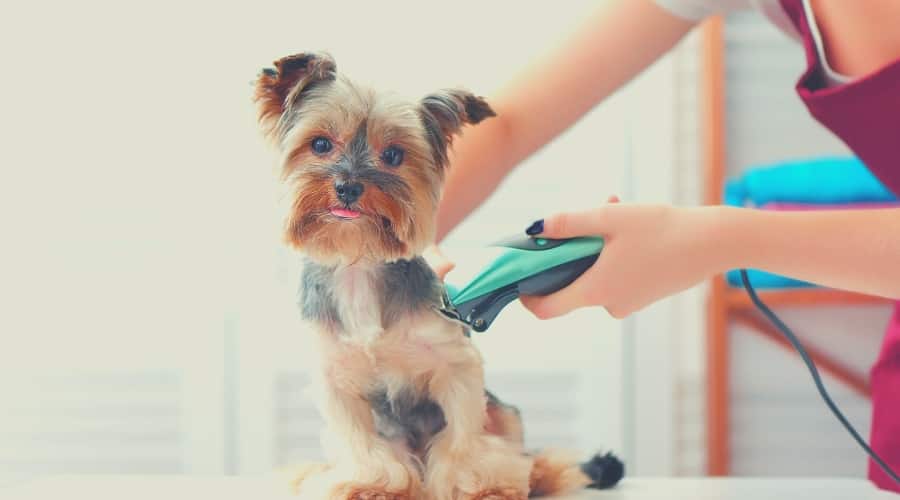
2. Stay on Top of Fleas & Ticks
Bug bites are a major hot spot trigger. Use vet-recommended flea and tick preventatives year-round, even in winter.
3. Consider a Diet Upgrade
Some dogs develop hot spots due to food allergies or skin sensitivities. Ask your vet if a limited-ingredient or omega-rich diet could help.
4. Reduce Stress & Boredom
Anxious or bored dogs often lick themselves raw. Ensure your dog gets plenty of mental stimulation, exercise, and attention.
Pro Tip: If your dog keeps getting hot spots in the same place, note the pattern, as it might point to a hidden allergy, behavior issue, or grooming gap. We have a guide on the best dog allergy tests to help you identify the allergen if it’s that.
FAQs: Home Remedies For Hot Spots On Dogs
Hot spots are a hot topic, and we know there are lots of questions about them. If you don’t see your question below, let us know in the comments section at the end, and we’ll get back to you with an answer.
What Is The Best Hot Spot Treatment For My Dog?
Are you still wondering, “What is the best cure for hotspots on dogs?” All dogs are different, and hot spots have various causes. So, the best hot spot treatment for your dog is the one that effectively treats your pup’s symptoms.
The Vetnique Labs Dermabliss might be the best option if your dog has a bacterial infection. However, if your dog is scratching like crazy, an option like Suldofene instantly numbs the area. You might have to try a few to find the one that works best for your dog.
Will Dog Hot Spots Go Away On Their Own?
No, it is very unlikely that hot spots on dogs will clear up on their own. Knowing how to treat hot spots on dogs at home can help you avoid costly vet visits and painful complications. They can quickly grow in size and severity without proper care, leading to more pain and potential infections.
This is why it is essential to see your vet when you notice a hot spot for the first time so that you can treat it immediately and appropriately. Home remedies for hot spots on dogs involve a veterinary diagnosis first. Investing in a dog e-collar is essential to stop your dog from making them worse.
Are Dog Hot Spots Contagious?
No, the hot spots themselves are not contagious to other dogs or humans. However, if the underlying cause is fungal or parasitic, the parasite or infection could be contagious. Identifying and treating the root cause is crucial to prevent the spread of potential parasites or infections.
Can I Use Neosporin or Human Ointments?
Not often, so skip them. Many human products are unsafe for dogs, especially if they lick the area. Use vet-approved or pet-safe treatments only.
How Long Do Hot Spots Take to Heal?
With proper care, most hot spots improve within 3–5 days and fully heal in 1–2 weeks. The key is fast action and preventing licking.
Why Does My Dog Keep Getting Hot Spots?
Recurring hot spots often mean there’s an underlying issue, like allergies, flea problems, poor grooming, or anxiety. Prevention is critical. Still unsure what you’re dealing with? Remember to check out our other hot spot guide to compare symptoms and causes.
A Diet Change Could Prevent Your Dog’s Itchiness
Learning how to treat hot spots on dogs at home saves money and helps your pup heal faster and feel better sooner. But itchiness is a symptom of a lot of health issues…
We have a guide on the best foods for dogs with allergies that might suit your dog’s dietary needs. You could also consider a fresh food option as they contain many natural ingredients, and you can sometimes tailor them for your dog’s food intolerances.
With your vet’s approval, you could also consider adding a probiotic supplement to your dog’s bowl to help with a wide range of health concerns, including itchy skin and allergies.
Have you ditched dog hot spots with one of these over-the-counter home remedies? We’d love to hear your experience with how to treat hot spots on dogs at home, including what worked, what didn’t, and any tricks your pup responded to best. We’d love to hear your thoughts and stories about your homemade remedy for hotspots on dogs in our comments below.



